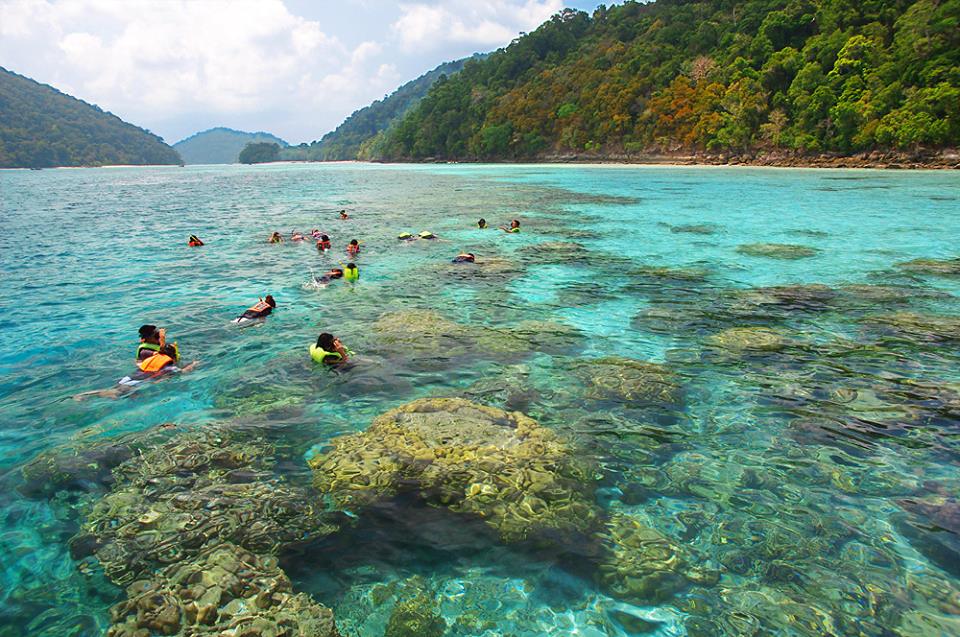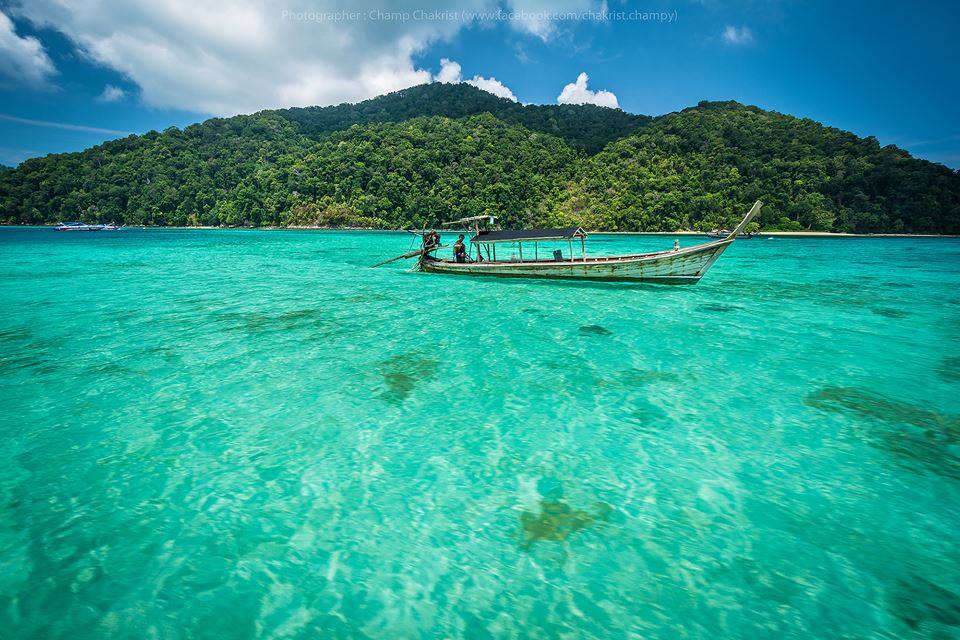General Information about Surin Islands (Mu Ko Surin National Park)
For many years Mu Ko Surin was an unspoiled group of islands, acting as a refuge for fishing boats during storms and hosting small communities of sea gypsies. In this situation the islands provoked little interest and for a long time were recorded as a National Forest Reserve by the Royal Forest Department. But on 30th December 1971 the National Committee on Wild Animal Reservation and Protection suggested that the islands should become a wildlife sanctuary. This was thwarted when it was realised that the islands occurred within the exploratory area leased to Weeks Petroleum Ltd. An alternative plan then proposed to develop the islands as a Vietnamese refugee camp. This idea was rejected as it was realised that the translocation and support of so many people in such a fragile environment, would soon result in damage to the islands pristine land and marine habitats. The Royal Forest Department appreciated the islands unique nature and their tourist and research potential. Thus the Royal Forest Department opposed the development of the islands and instead proposed the establishment of a national park to protect the area. Mu Ko Surin was eventually gazetted as the 29th National park of Thailand on 9th July 1981.
Mu Ko Surin National park is situated in the Andaman sea approximately 60 km from the Coast of Phang-Nga Province in the southern peninsula region. The park covers an area of approximately 141.25 km2. Of the protected area 108 km2 or 80% is sea. The park comprises 5 main islands; Ko Surin Nua, Ko Surin Tai, Ko Ree (or Ko Satok), Ko Glang (or Ko Pachumba) and Ko Khai (or Ko Torinla). Ko Surin Nua and Ko Surin Tai are large islands and are situated on a north-south axis. A few kilometers to the north of the park is the Myanmar border and about 100 kilometers to the south is Mu Ko Similan National Park.
Geography
Surin Islands comprise of five main islands, including 2 large islands consisting of the northern surin island and southern surin island which located very adjacent like the twin island. They are separated by the 200 meters width shallow sea. In the low tide period, you can walk across to the other island or so-called “cutted channel bay”. The other three islands are the rock islands with some dwarf trees. Plants that found here are the rainforest plants. They are one source of the big and best fertile shallow coral reef of Thailand.
Climate
Could be classified into 2 seasons consisting of hot seasons starting from mid of February – May, while the raining season starting from mid of May till October which has a highest level of rainfall. The yearly average rainfall is more than 3,000 millimeters and the average of related humidity is 83 percent. In rainy season, the national park will be closed during 1 May – 31 October every year for visitors safety.
Flora and Fauna
Vegetation, able to classify the society of plants as follows :
Primary rainforest covers most area of the national park, both of slope and ridge of mountain. The important plants found here are Diospyros malabarica Kostel., etc.
Beach forest could be found in beach areas where you can find many kinds of plant such as Barringtonia, Cerbera odollam, etc.
Mangrove forest is located in the mud area and the brackish water of Mae Yai bay. This is not the fertile forest but you can find some kinds of plants such as Rhizophora apiculata, Rhizophora mucronata, Xylocarpus granatum, etc., while some dwarf forest or grove plants comprise of Cycas pectinata Griff., Dillenia obovata (Bl.) Hoogl., Erythroxylum cuneatum Kurz, etc.
Wild Animals
Birds, from survey found totally 91 types of birds including local birds about 57 types and the others are the migrating birds from elsewhere, such as Little Heron, Common Sandpiper, Little Tern, etc.
Mammal animals could be found here totally 22 types including 12 types of bat such as Island Flying fox, Black-Bearded Tomb Bat, Pig-Tailed Macaque, Common Wild Pig, etc.
Reptiles have been found 6 types such as Indian or Bengal Monitor, Water Monitor, Skink, Reticulated Python, etc.
Coral, such as Needle coral, etc.
Fishes , such as Damselfish, Wrasse, Butterfly-fish and Midas blenny; Ecsenius midas etc.
Sea Turtles, Sea turtles are a very ancient family of animals and their ancestors date back to when Dinosaurs roamed the earth. Although the Dinosaurs are now extinct, the sea turtles are still surviving although their future existence is in doubt. Many species are endangered with several species near extinction. Their principle threat is the loss of their nesting beaches to development stimulated by increasing tourist pressure. This has reduced the number of turtles worldwide to such an extent that positive action must be taken to secure their existence in the future. The principle action is the preservation of their nesting beaches, and the protection of the eggs from theft once laid. Sea turtle still nests on the Surin islands, with two species coming ashore to lay their eggs, Hawksbill, and Green turtles. In the early 1990’s we also had a few nest of the rare Olive Ridley turtle. Mu Ko Surin is the best place in Thailand for anyone who want to swim with sea turtles. Most visitors have a few chances to get close to them, mostly hawksbill turtle.
Data Reference: http://www.dnp.go.th





